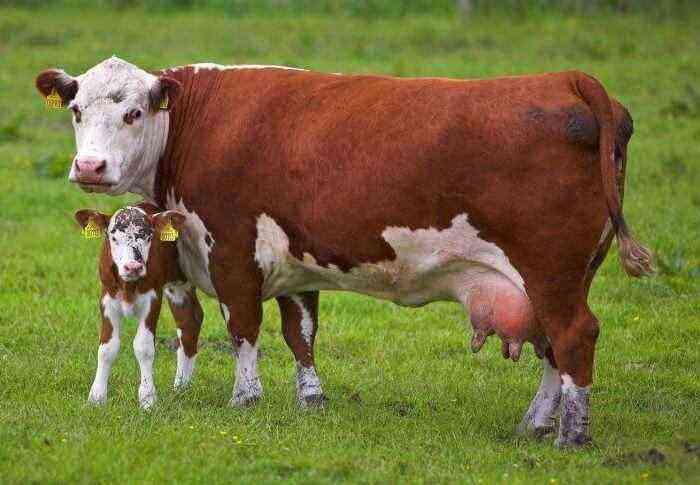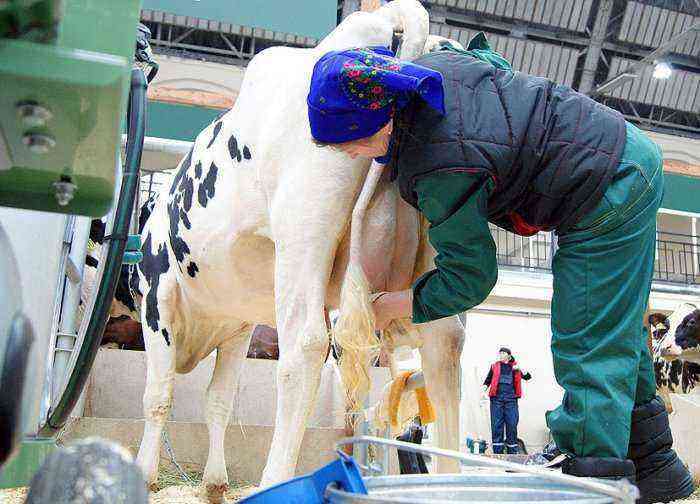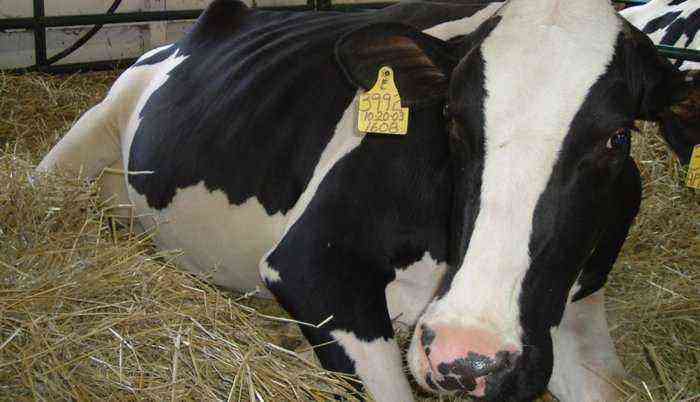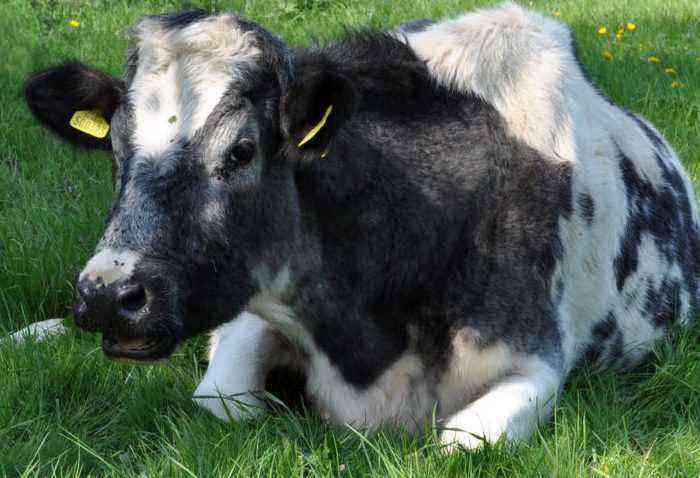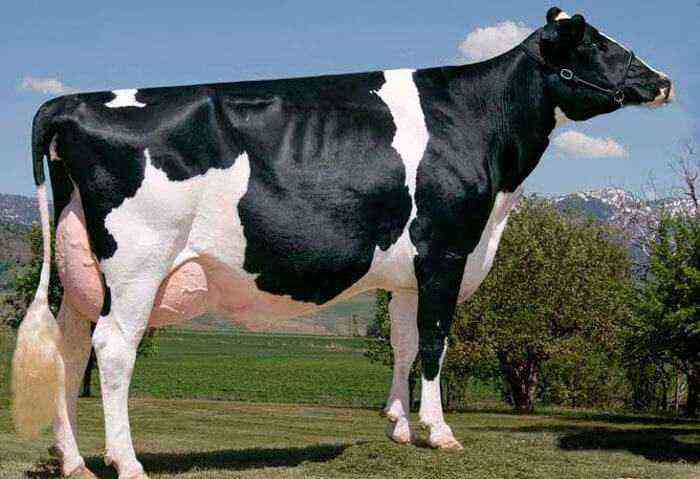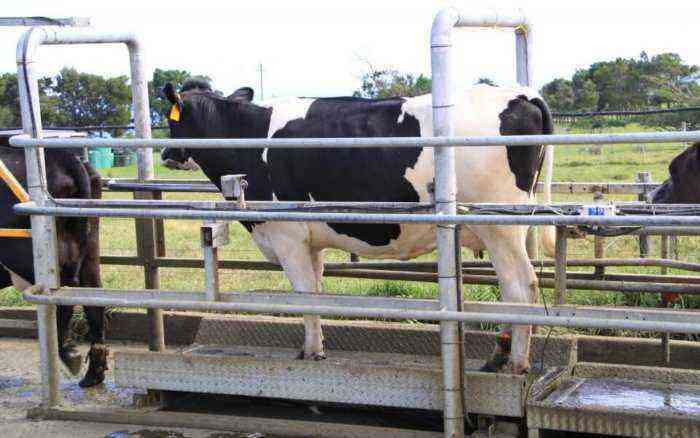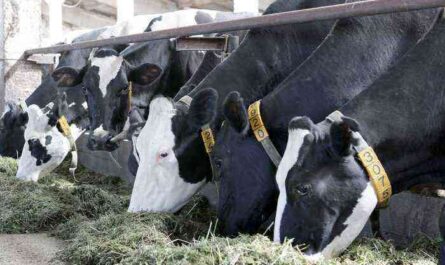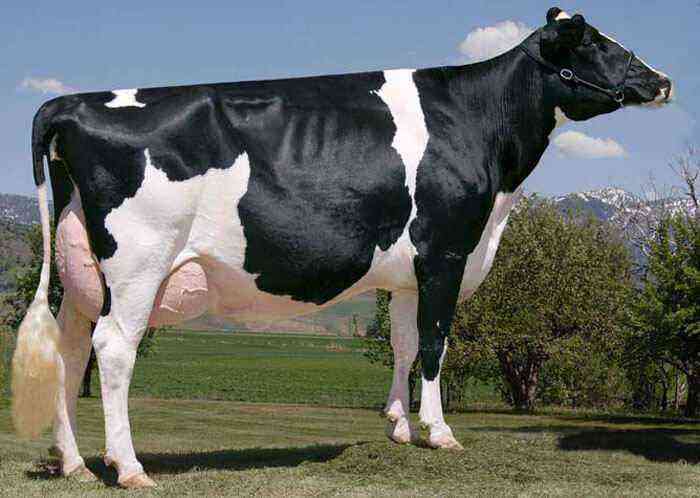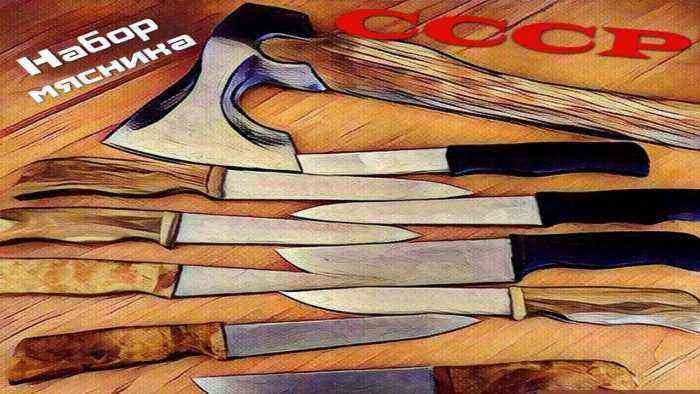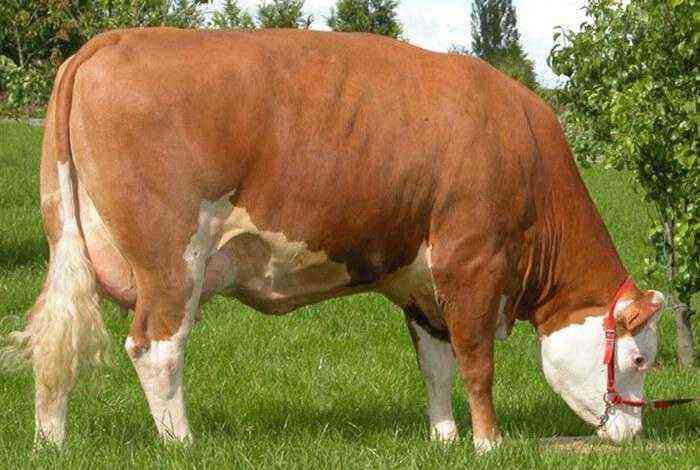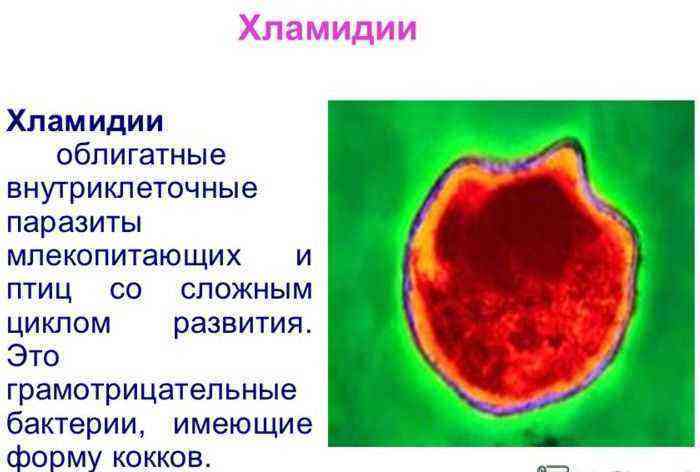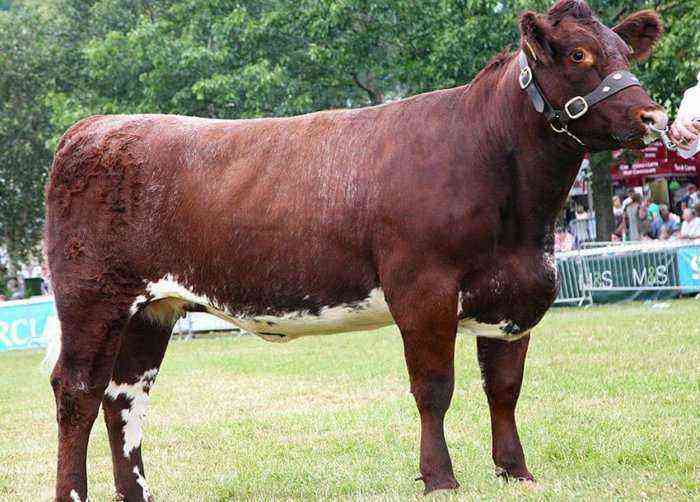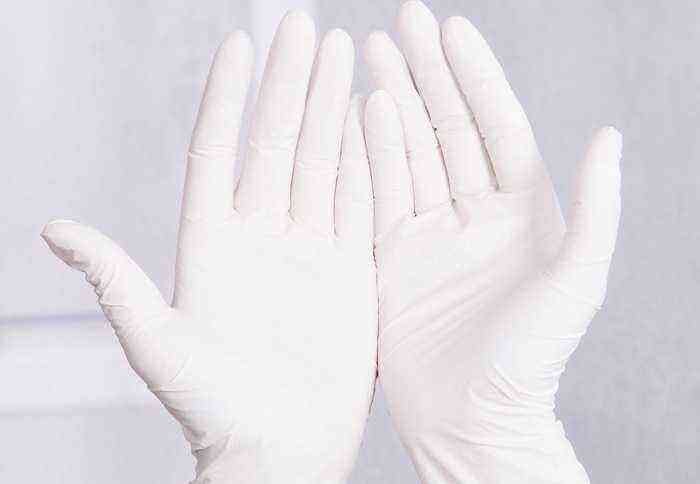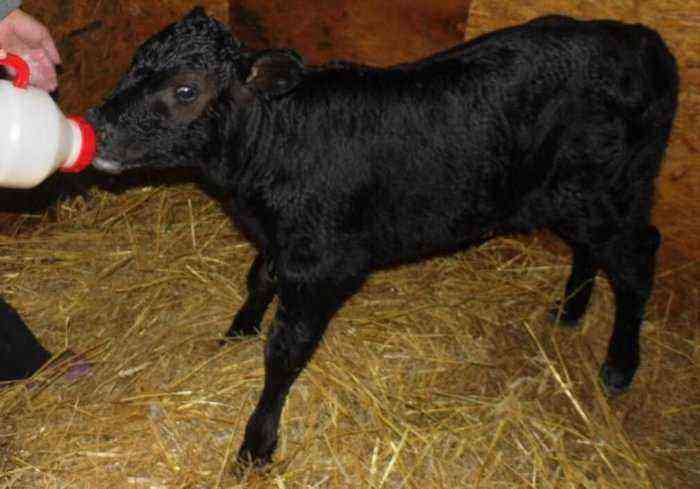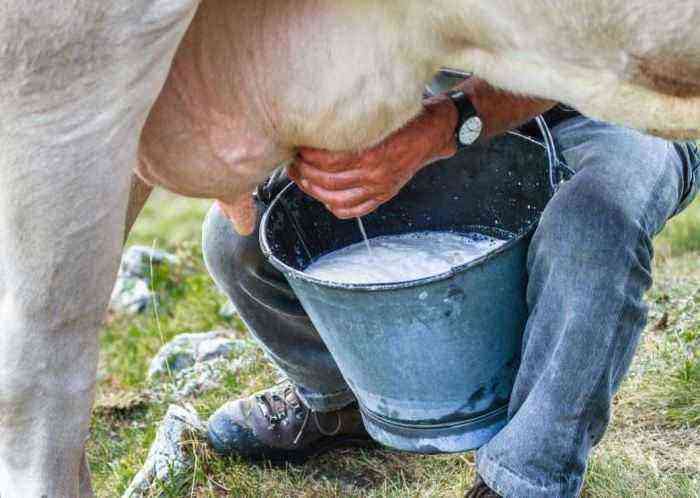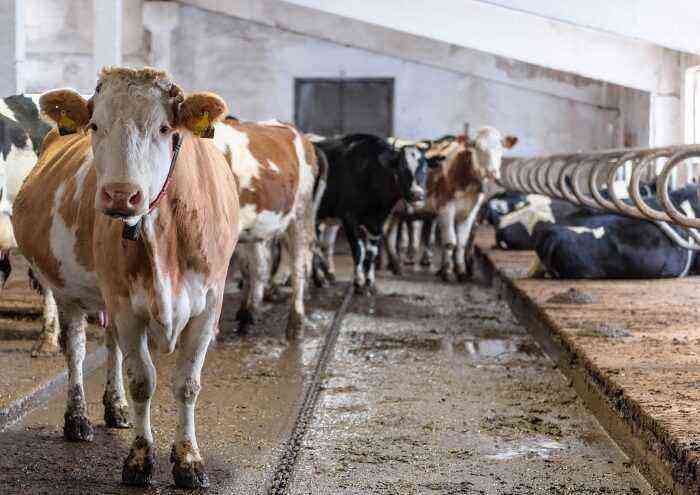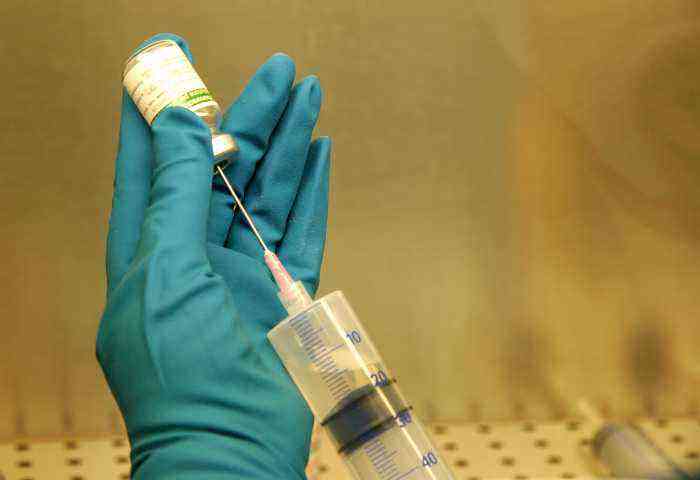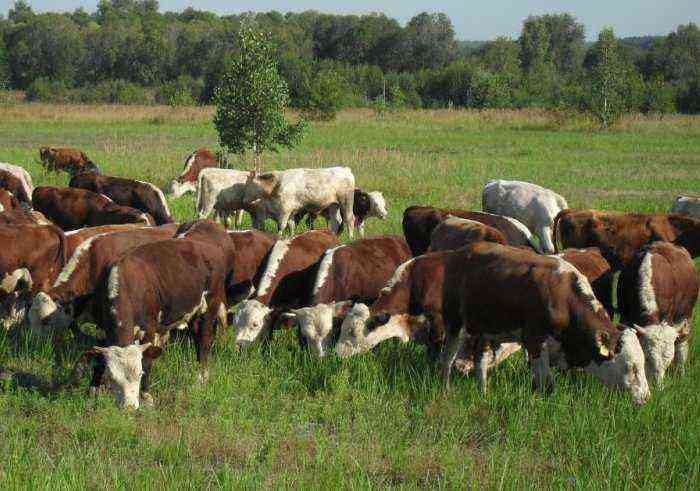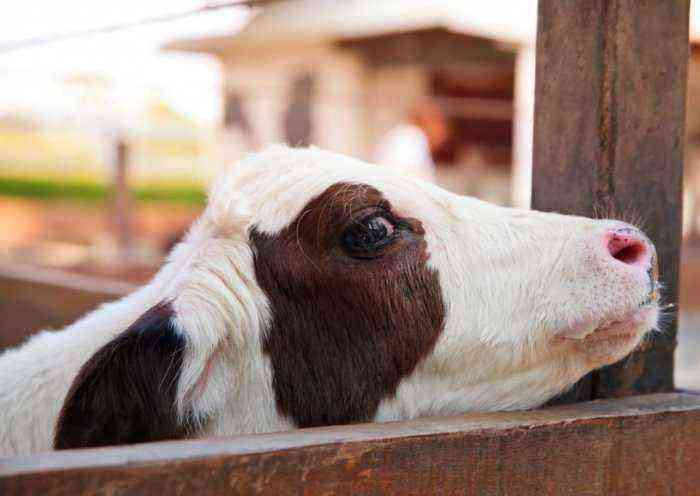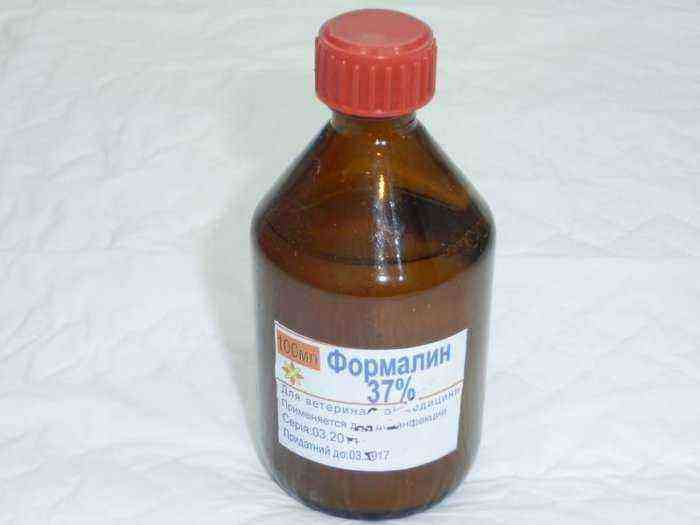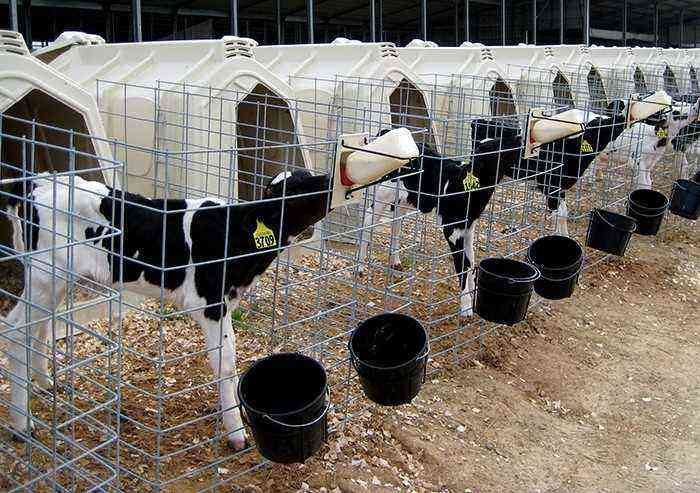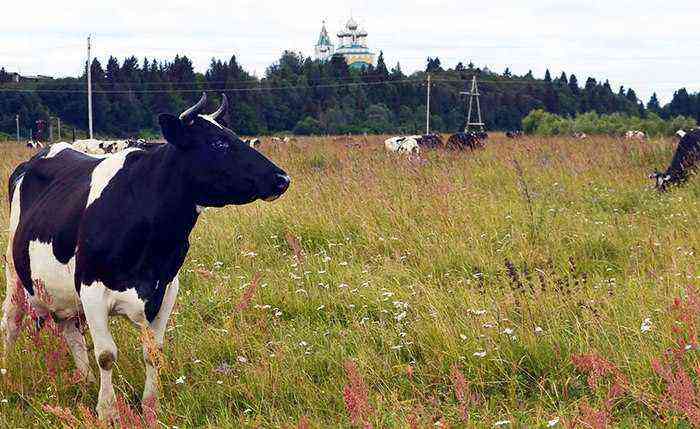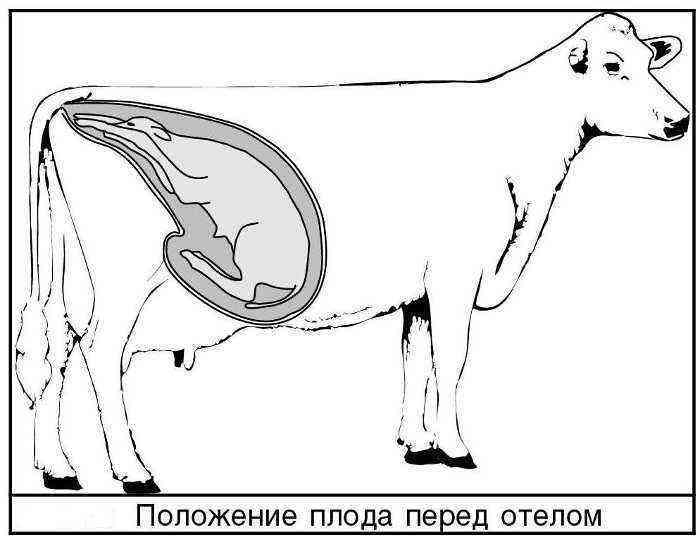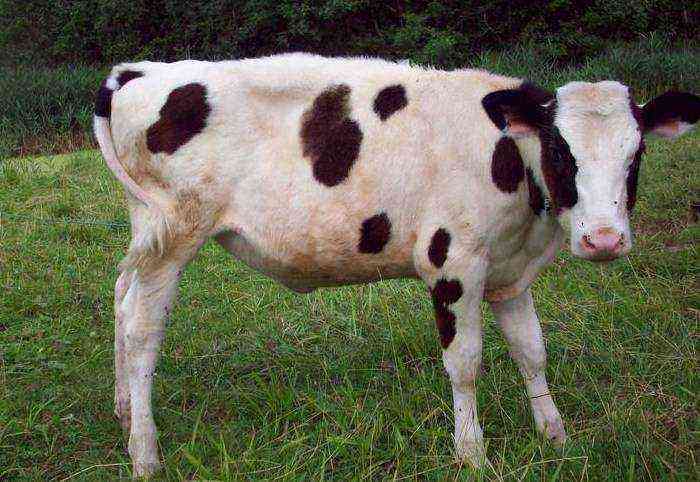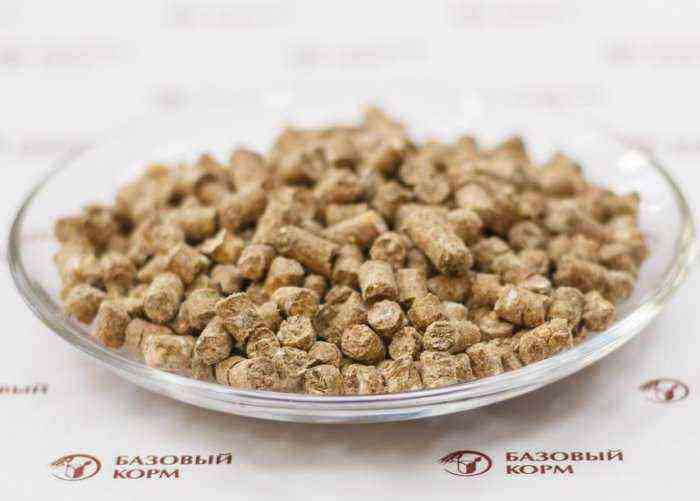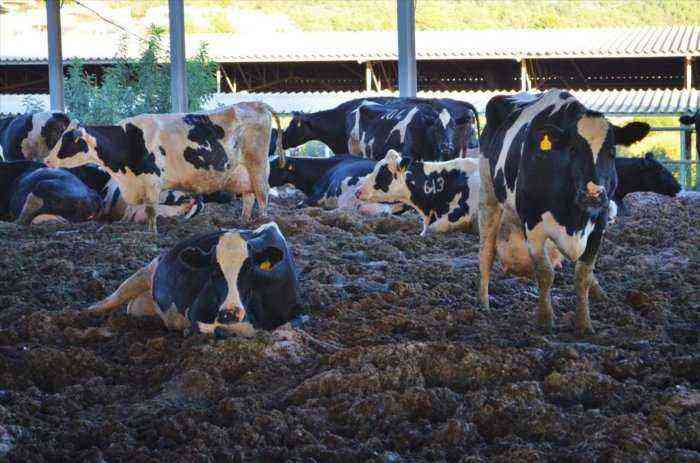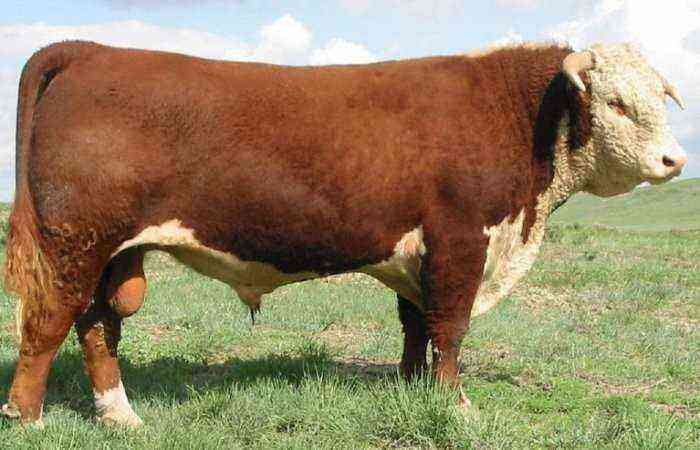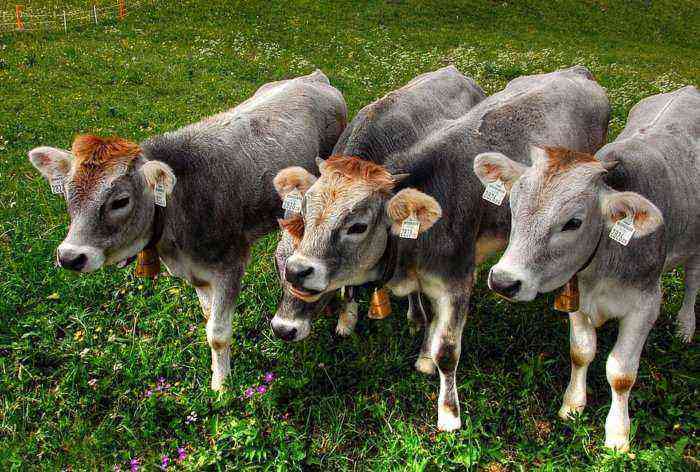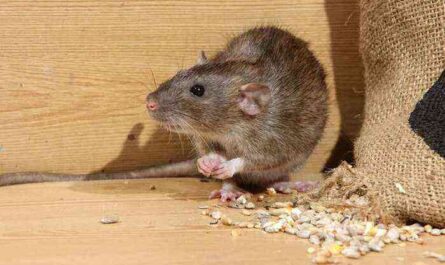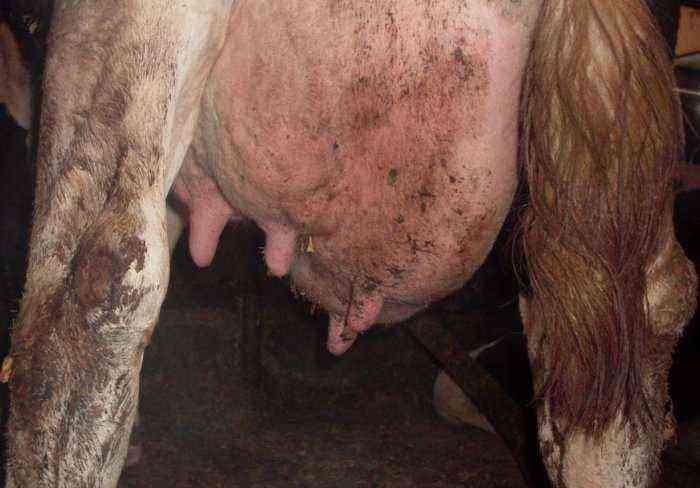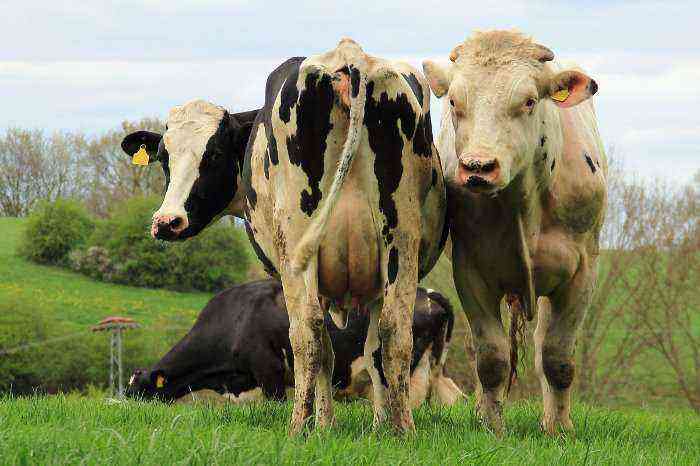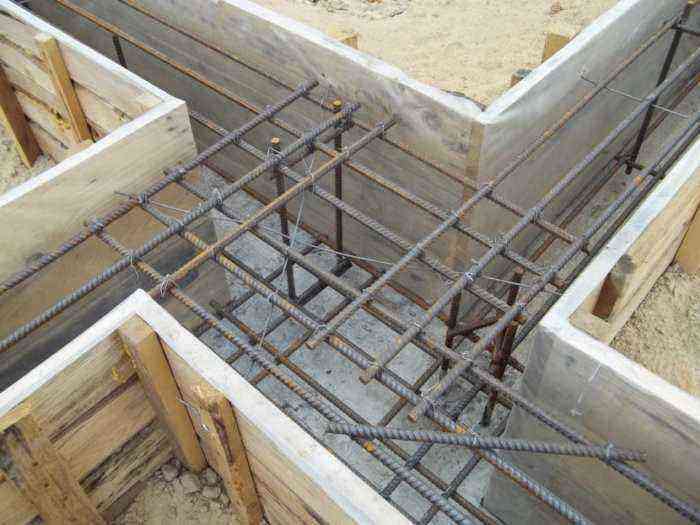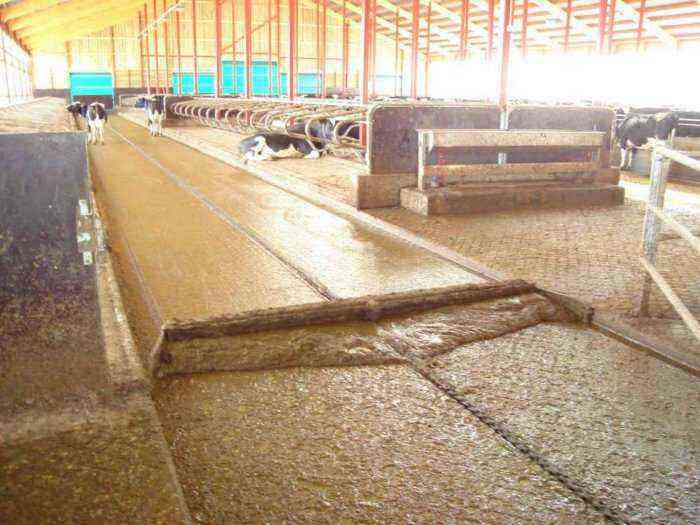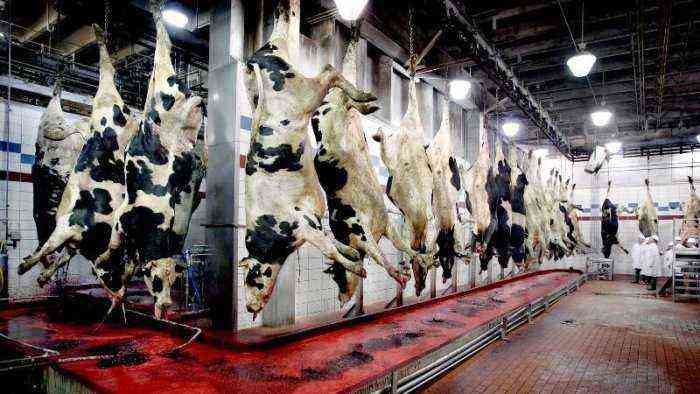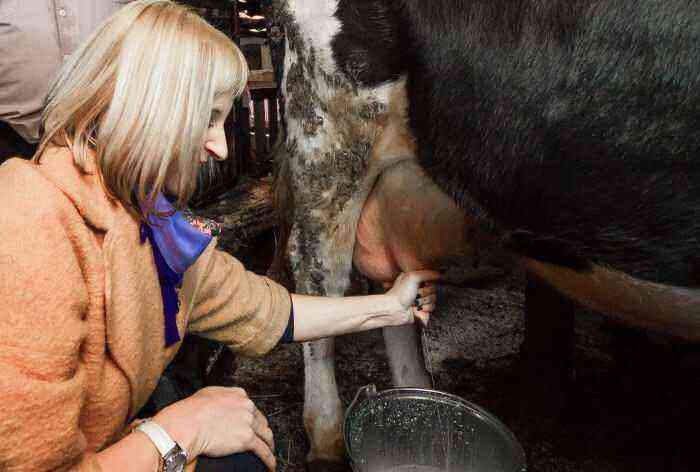Speaking of cows, most people immediately imagine a large, well-fed cow with long horns. But not always livestock looks like that. The so-called polled breed of cows differs from this description. Its main feature is the complete absence of horns and pineal growths instead of them.
polled calf
What is a clod?
The term “hornless” implies the complete absence of horns in large and some types of small cattle. The appearance of the word is associated with the term “butt”, which refers to the thick end of a felled tree, which looks like a cone. Similar-looking outgrowths in place of the horns are also on the head of a polled cow.
There can be several reasons why cattle lack horns. Two of them are the main ones:
- Targeted cutting of antlers so that the animal does not injure itself and other members of the herd.
- Polled transmission between generations. In this case, the absence of horns is a genetic feature.
It is worth noting that in some livestock breeds, hereditary polledness is the result of long-term deliberate selection. Thus, the breeders sought to secure the cattle in the future and save effort on cutting the horns.
Breeds of hornless cows
There are several varieties of cows in which polledness is inherited. Moreover, in several breed lines, breeders managed to fix this trait for all representatives.
Aberdeen Angus
This breed appeared at the end of the XNUMXth century in Scotland and belongs to beef cattle. Due to its high productivity, breeders from other countries, in particular the USA, Canada, Russia and Australia, also began to engage in it.
The average weight of an Aberdeen Angus cow does not exceed 650 kg. Breeding bulls reach 950 kg or more. The height of an adult at the withers is on average 1,5 m.
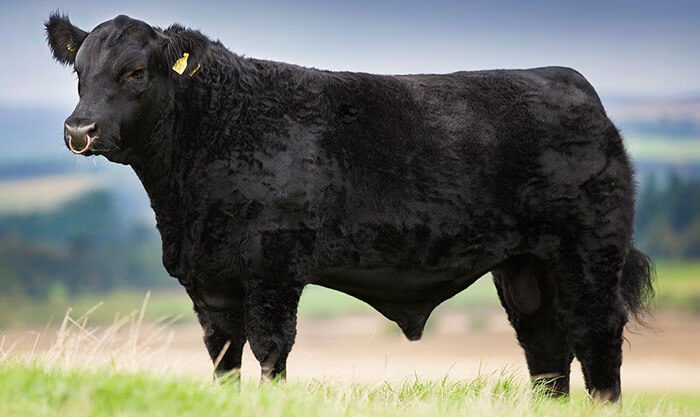
Aberdeen Angus cattle breed
The body type of cattle of this breed is dense. The body is rounded, barrel-shaped. Legs are short. The neck is practically not expressed, the head immediately passes into the body. The back is straight with a strong loin. The cow’s coat is exclusively black.
Among the features of the pedigree line are the following:
- high quality meat, characterized by thin layers of fat;
- high slaughter yield of the meat product, which, with proper feeding, is 60% or more;
- fast acclimatization and developed endurance;
- when crossing, high meat productivity is transferred to other breeds.
Reference. In Aberdeen Angus cattle, hornlessness persists from generation to generation and is passed on to all offspring. There are no exceptions to this rule.
redpole
The redpol breed line also appeared in the XNUMXth century. Breeding work on its breeding was carried out in England, in the counties of Norfolk and Suffolk. For its breeding, mainly local dairy varieties of cattle were used.
Redpole is distinguished by a red-cherry suit. Individuals may show white markings on the udder or tail. The breed has an average milk production. Annual milk yields are at least 4500 liters. At the same time, the meat component is also quite developed. The average weight of a cow is 600 kg, while bulls can reach 900 kg or more.
Redpole tolerates heat and mosquito bites well. Polledness can be traced in almost all offspring, but in isolated cases, the gene responsible for the growth of horns can still prevail.
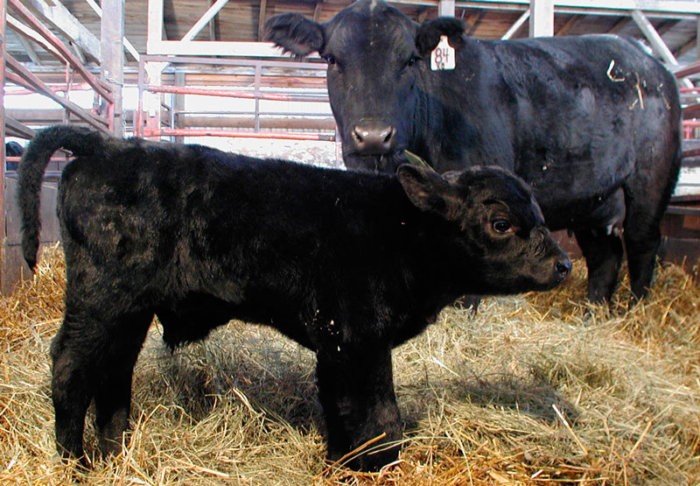
Redpole cattle breed
To date, this type of livestock is raised in the UK, Africa, the USA and Australia.
Polled cow from Iowa
Unlike the above breed lines, the polled cow from Iowa is an ornamental animal. It was bred in Iowa, USA, by local farmer Matt Lautner specifically to participate in exhibitions and fairs.
In addition to the complete absence of horns, representatives of this species also lack an udder. Outwardly, such cattle looks like a plush toy. The reason for this is the small size and thick, soft to the touch coat of various colors.
Of the exterior features of the breed, the most noticeable are the following:
- small sizes;
- back, represented by one straight line;
- a long tail that ends with a tassel;
- short neck;
- voluminous hair, which makes the head look disproportionately small.
Reference. Today, Lautner sells his pets all over the world, but the cost of one plush cow reaches 5 thousand dollars or more.
Russian Komoly
Russian polled is a bright domestic representative of hornless cows. The purpose of breeding this breed was to obtain livestock with high meat productivity. Representatives of the Aberdeen-Angus and Kalmyk breeds were used as the starting material in the breeding work. To date, the number of Russian polled is only 8 thousand individuals.
As for the external signs of the breed line, the most striking of them include:
- weight of females – no more than 550 kg, males can reach a mass of 1100 kg;
- wide massive back;
- deep, powerful muscles in the chest;
- miniature head in comparison with the body.
The breed has a pronounced meat physique and developed muscle mass. At the same time, the yield of beef from an adult meat-fed beef is on average 80%.

Russian polled breed of cattle
Also, the features of Russian hornless cattle include high disease resistance, endurance, and rapid acclimatization. But this variety of domestic cattle is especially valued for the high quality of meat, which is distinguished by tenderness, pleasant taste and a minimum amount of fat. It is considered dietary and is suitable for consumption even by sick people and those who are on a diet.
What is also characteristic is that such cattle quickly gain weight even with a meager variety of feed. In addition, unlike many other breeds, it is able to increase its mass much longer.
Polled cows are far from uncommon today. Several meat, dairy and even decorative breeds fit into this category. In terms of nutrition and breeding, they are not much different from ordinary livestock. But pet owners should be careful. Even without horns, an adult is able to butt a person, which can turn into very unpleasant consequences.
